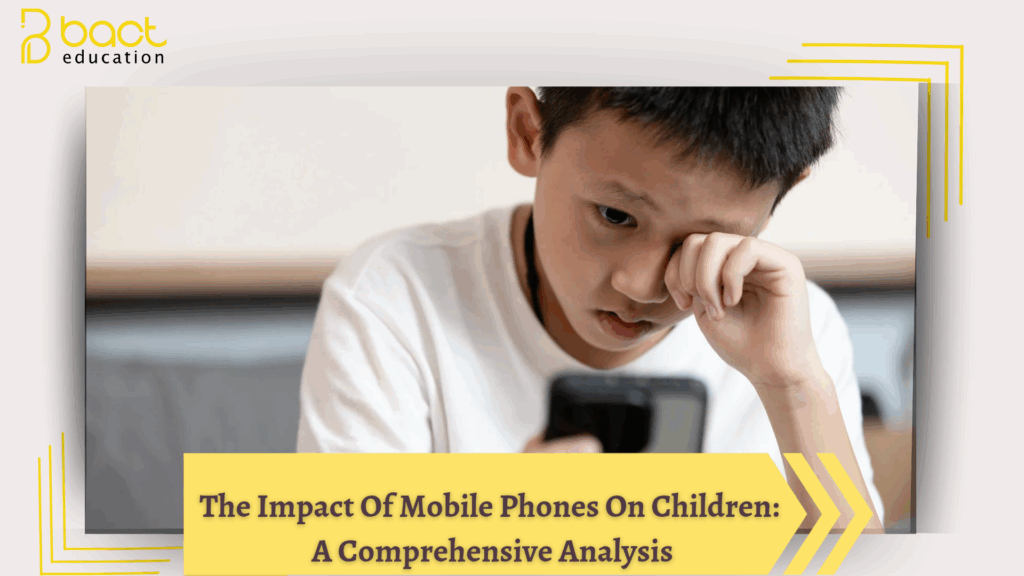Introduction
Mobile phones have become an integral part of children’s lives in the modern era, with statistics showing that over 80% of youth in India and 95% of teens in the U.S. own smartphones 9. This widespread prevalence has sparked significant debate about the positive and negative effects of mobile phone use on children’s development. This article aims to explore the various aspects of this impact, providing balanced insights based on the latest scientific studies and research.
Positive Effects of Mobile Phone Use on Children
1. Educational Benefits
Mobile phones offer unprecedented educational opportunities for children. They provide access to a wealth of information and educational resources that can complement traditional learning methods. Educational apps and e-books make learning more interactive and engaging 4. Specially designed apps for children help develop fundamental cognitive skills such as problem-solving, critical thinking, and creativity 4.
2. Skill Development
A study conducted by the University of South Florida (USF) showed that children who owned their smartphones performed better on multiple well-being measures compared to those without phones. They were less likely to report symptoms of depression and anxiety, more inclined to spend time with friends face-to-face, and felt better about themselves 5. Phone use can also enhance communication skills and hand-eye coordination in children.
3. Social Connection
In a world where digital communication has become a fundamental part of social interactions, phones allow children to stay connected with friends and family, especially in cases of geographical distance or exceptional circumstances like pandemics. This connection can support emotional health and reduce feelings of isolation.
Negative Effects of Mobile Phone Use on Children
1. Mental Health Issues
Numerous studies have shown a strong link between excessive smartphone use and increased rates of depression and anxiety among children and adolescents. In the United Arab Emirates, a study found a positive correlation between smartphone addiction and both anxiety and depression 14. Girls showed higher levels of anxiety and smartphone addiction compared to boys 14.
2. Sleep Disorders
Using phones right before bedtime is directly linked to sleep disorders in children. According to the USF study, children who sleep with their phones in hand or in bed get fewer hours of sleep (8.6 hours on average) compared to those who leave their phones in another room (9.3 hours on average) 5. This is because the blue light emitted from screens delays the secretion of melatonin, the hormone responsible for regulating sleep.
3. Academic Decline
Data from “The Nation’s Report Card” showed that reading and math scores among U.S. students began to decline after 2012, reversing decades of slow but generally steady increase 13. International PISA tests also showed declines in math, reading, and science globally, starting in the early 2010s 13. Researchers attribute this decline to increased screen time at the expense of studying and reading.
4. Cyberbullying
With increased smartphone use, cyberbullying has become a growing risk for children. A study in the UAE found a positive correlation between cyberbullying victims and both anxiety and depression 14. Victims may themselves become bullies, creating a vicious cycle of aggression.
5. Reduced Physical Activity
A Saudi study showed that children not addicted to smartphones had higher levels of physical activity compared to addicted children, indicating that smartphone addiction reduces physical activity 10. This decrease in physical activity can lead to increased fat mass and decreased muscle mass, with accompanying negative health consequences.
Recommendations for Healthy Mobile Phone Use
Based on scientific evidence, the following recommendations can be made to mitigate the negative effects of mobile phones on children:
Delay Smartphone Ownership: Experts recommend not giving children smartphones before high school, opting instead for basic phones or smartwatches when they become independent 7.
Set Usage Time Limits: Implement strict time restrictions on phone use, especially for middle school children who have become heavily dependent on these devices.
Phone-Free Schools: There’s no justification for having “the greatest distraction device ever invented” in children’s pockets during school hours 7. Removing phones from classrooms helps students focus on their teachers and spend time with peers.
Encourage Play and Independence: We need to roll back the “phone-based childhood” and restore the “play-based childhood” 7. Children need opportunities for independent exploration and real-world responsibility.
Monitor Social Media Activity: Parents should discourage young children from posting publicly on social platforms and be alert for the slightest signs of cyberbullying 5.
No Phones in Bed: Children should not sleep with phones in hand or in bed, as this negatively affects sleep quality and quantity 5.
Conclusion
Mobile phones offer significant educational and social opportunities for children, but their excessive or uncontrolled use poses substantial risks to their mental and physical health, as well as their academic and social development. The solution lies in adopting a balanced approach that recognizes the benefits of technology while implementing safeguards to protect children from its harms. This requires collaboration among parents, educators, policymakers, and technology companies to create a safer digital environment for children.

